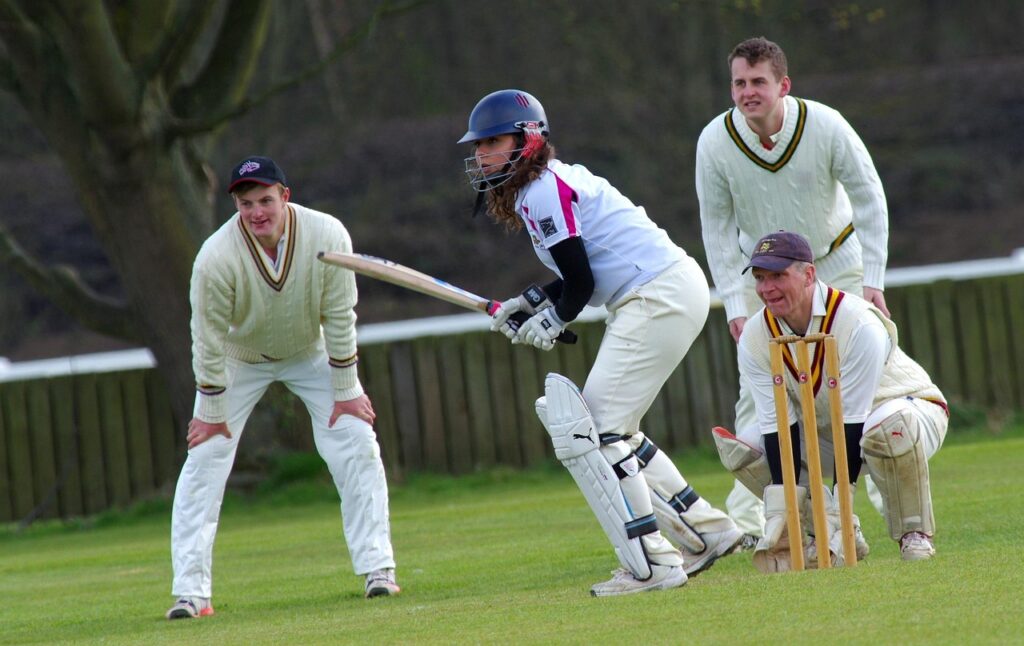You can tell when a match stops being something you watch and becomes something you feel. It happens the moment a batter’s shoulders loosen after a gritty single, or when a bowler walks back with eyes fixed and jaw set. That change in posture moves across the field and into living rooms, cafés, hostel common rooms, and train seats. Viewers don’t copy the athletes; they mirror them. A crowd that was chatting a minute ago starts breathing on the same beat as the bowler’s run-up. A family that planned to switch off at ten decides to sit for one more over because the opener’s body language promises “one last push.” Emotion becomes a signal you can read without a mic or a stat, and the signal is strong enough to redraw the room.
Cricket amplifies this transfer because its rhythm leaves space for meaning. A test of nerve stretches across multiple balls, spells, and sessions, so viewers get time to attach. Everyone knows the tiny signs: a set batter blinking harder under lights; a quick word between fielders that sharpens a ring; a wicketkeeper’s stillness right before a plan springs. When the camera catches those details, the audience leans forward in the same way the eleven do. You can feel palms dry after a tight leave. You can feel a city relax with a late cut that finally beats backward point. No speech is necessary. The field writes mood lines; the crowd reads them in real time.
How the field’s heartbeat syncs a scattered crowd
A live broadcast pulls strangers into one pulse. Students on sketchy Wi-Fi in Pune, a night-shift team in Dubai, an aunt in Kolkata plating dinner with the TV on low – each person adjusts to the players’ nerve. The craft is simple: the camera gives you faces at the right moment, the sound holds crowd noise just under the bowler’s gather, and the graphics step back when tension rises. Do that well and viewers stop being spectators and start being partners in the plan. They count with the team, they flinch with the mishit, and they ride the mini-victories – dot, dot, scampered two – like a chant. When people also want quick context on fixtures or squads during that flow, they prefer one clean path that doesn’t drown out the feeling. A neutral, low-friction pointer such as an online cricket betting app india link belongs in that toolbox only if it stays quiet: open, check, close, breathe.
The transfer of emotion turns clearer in the tightest minutes. Death overs are percussion: fielders bounce on toes, the bowler shortens the stride by half a shoe, and the captain stops blinking during calls at mid-off. At home the body mirrors that drumline without permission. People stand without noticing. Someone mutes a chat. Even the family dog senses the room has changed. When a yorker lands after two slower balls, relief arrives with laughter, not words. When it misses and turns into a low full toss, the groan is the same in Jaipur and Johannesburg. That is the strange fairness of sport: the physics are local, but the feeling is universal. The field writes a change in probability; the audience registers it as a change in pulse.
What makes the mirror so sticky is memory. Fans hold small archives of looks, stances, and habits: a seamer’s way of pinching the seam when he’s about to try the wobble; an opener’s habit of checking the crowd when he needs to slow himself down; a keeper’s habit of smiling right before a plan with the leggie. Those pictures build trust. When an athlete returns to a familiar expression, viewers know what’s coming and brace in the same way the team does. That shared history keeps people present through the quieter overs. They don’t need fireworks; they need the sense that craft is unfolding and that their attention matters. It’s why a well-left ball can lift a room, and why a tidy over can reset a whole neighborhood’s mood after a bad drop.
There’s a social reason the transfer feels so complete. Cricket nights happen in groups: cousins on a sofa, friends around a phone at a tea stall, co-workers drifting toward the screen in a break room. The athlete’s emotion chooses the room’s temperature, and the group multiplies it. One person’s gasp becomes five people’s laugh; one person’s “hold shape” becomes a chorus of “stay, stay, stay.” These tiny echoes make the stakes feel fair and shared. Even when someone also follows lines or promotions, the healthy rooms keep a rule most parents would like: celebrate plays, don’t pick on people; cheer for plans, not just outcomes. That tone lets the transfer of emotion lift the night without turning it sour when luck nudges the script.
Technology can strengthen or spoil the bridge. The best broadcasts protect the handover by getting out of the way at the right time: big type, steady frame, replays that explain ideas rather than overwhelm them. Alerts should be rare and relevant, never barging in during run-ups or just before release. Low-data views matter because emotion doesn’t buffer well; people would rather miss a flourish than miss a ball. A good tool set lets you check a squad, confirm the over count, and return to the moment before your heartbeat falls out of sync with the bowler’s. When production and tools respect attention, the field’s mood reaches the audience intact, and the night feels honest.
Conclusion
In the end, the players’ emotions become the audience’s because both sides want the same thing: a plan that holds under pressure. That promise – of nerve and craft meeting uncertainty – keeps people in their seats long after bedtime and brings them back the next evening with fresh tea and a hopeful shrug. You can measure the score and still believe in the sigh before the ball leaves the hand. You can know the odds and still live for the look on a batter’s face when he finally sees length early. When a match gives you both, the transfer is complete. The field beats; the room answers; and for a few overs, a nation scattered across homes, buses, and cafés moves as one.

 Elaine Shippsters serves as the tech innovator behind Betting Edge Brite, leading the charge in integrating AI and advanced technology into the platform's core functionality. With a background in software engineering, Elaine has played an instrumental role in developing the technical infrastructure that powers Betting Edge Brite’s AI-driven predictions and betting algorithms. Her contributions have allowed the platform to leverage cutting-edge technology, offering users sophisticated tools to stay ahead of the game. Elaine’s work ensures that Betting Edge Brite remains at the forefront of innovation in the betting industry.
Elaine Shippsters serves as the tech innovator behind Betting Edge Brite, leading the charge in integrating AI and advanced technology into the platform's core functionality. With a background in software engineering, Elaine has played an instrumental role in developing the technical infrastructure that powers Betting Edge Brite’s AI-driven predictions and betting algorithms. Her contributions have allowed the platform to leverage cutting-edge technology, offering users sophisticated tools to stay ahead of the game. Elaine’s work ensures that Betting Edge Brite remains at the forefront of innovation in the betting industry.